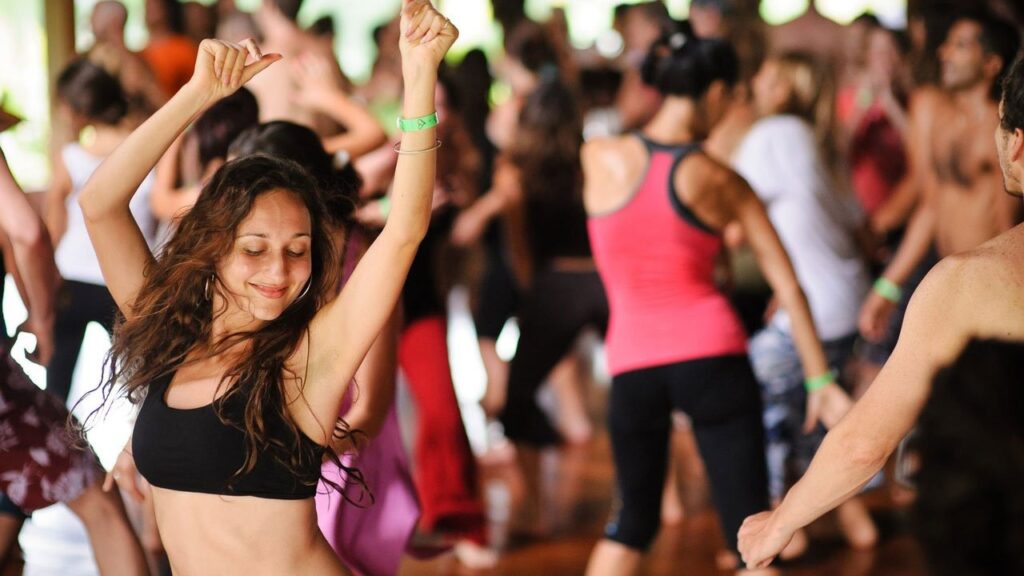OSHO Active Meditations

When can OSHO Active Meditations help?
- Stress Reduction: OSHO Active Meditations and meditation, in general, reduce the production of the stress hormone (cortisol) in the blood. This lowers the overall stress level and increases calmness and relaxation.
- Anxiety Relief: Through relaxation, meditation can reduce the symptoms of anxiety disorders and help lower overall anxiety levels (including releasing various fears).
- Emotional Release and Well-being: OSHO Active Meditations and its techniques allow us to consciously express, experience, and release suppressed feelings and emotions from the body-mind, bringing the body back to a relaxed harmony. This increases emotional stability and resilience.
- Increased Patience, Tolerance, and Empathy: Meditation helps develop patience and tolerance, allowing you to better handle difficult situations and people, as improved emotional understanding and the ability to respond calmly in difficult situations are achieved.
- Improved Relationships: Due to increased emotional awareness and compassion, meditation can lead to healthier and more fulfilling relationships with others.
- Increased Self-awareness: Through meditation, you can develop a deeper self-esteem, understanding of your thoughts and behaviors, leading to personal growth and self-development.
- Improved Sleep Quality: Meditation can improve sleep quality by promoting relaxation and reducing insomnia and other sleep-related problems.
- Enhanced Focus and Concentration: Regular meditation practice can increase the ability to focus and stay focused on tasks, as it affects the brain area associated with maintaining attention. Memory improvement has also been observed.
- Lower Blood Pressure: Regular meditation is associated with lower blood pressure levels, reducing the risk of heart disease and related health problems.
- Pain Management: Meditation techniques can help manage chronic pain by altering pain perception and increasing pain tolerance.
- Stronger Immune System: Some studies suggest that meditation can positively affect the immune system, improving overall health and increasing resistance to diseases.
- Increased Creativity: Meditation can stimulate creative thinking and problem-solving abilities, promoting a clear and focused mind.
- Mind-Body Connection: Meditation fosters a stronger connection between the mind and body, promoting overall well-being and harmony.
- More Informed Decisions: Regular practice can improve cognitive abilities, leading to thoughtful and balanced decision-making processes.
- Spiritual Growth: Those seeking spiritual development or a deeper understanding of life’s purpose may find meditation a valuable tool for inner exploration and growth.
It is important to note that the benefits of meditation are often cumulative, meaning that regular practice over time yields greater and more lasting results. While meditation can be a powerful tool for personal growth and well-being, it is essential to approach it with dedication and an open mind to fully experience its benefits.
How do OSHO Active Meditations work?
Dr. John Andrews explains the nature of meditation, introduces the science behind meditation, and highlights the differences in active meditations.
What Meditation is not?
Meditation is not thinking about something. Meditation is not concentrating on something. Meditation is not doing something. Meditation is not a flow of images. Meditation cannot be done, targeted, achieved, or pursued. It is simply a state of being that occurs when the right techniques are practiced consistently and in a receptive state.
OSHO explains that meditation is the opposite of concentration:
Contraindications
- Psychiatric diseases and personality disorders
- Epilepsy
- Age under 18 years
- Recent (less than 1 month ago) surgeries and injuries
Health condition is discussed with the instructor before the session.
Useful to know
Meditation is a state of being where you are a non-judgmental observer/witness, fully aware of everything, extremely alert and at the same time completely relaxed. Meditation happens in presence; it is a state of being here and now, where there is clarity, expansion, awareness, and at the same time no thoughts. Meditation is not meditating on something or someone. Meditation is a state of being with which we are born, but we have lost contact with this state. Meditation begins where all thinking pauses. The right meditation techniques help us reach thought pauses by moving from thoughts/mind to the core being. By surrendering and relaxing into the present moment, we fall into our essence, and the mind also calms down. OSHO explains that the mind and meditation cannot coexist. The mind thinks and meditation is silence. Meditation knows.
Before the session
It is recommended not to eat a heavy meal at least 1 hour before the session. Wear comfortable clothes to the session that allow you to move, sit, and lie down.
After the session
After the session, it is important to take some time to integrate the experience. Trust your feelings to choose a calm state and avoid excessive stress after the session. Drinking pure water helps the body cope with changes. If possible, avoid alcohol, narcotics, and psychotropic substances.
Recommendation
For better results in major challenges, it is recommended to meditate for at least 21 days in a row. This gives the body and mind the opportunity to reach deeper relaxation, where the healing process can begin. In a one-on-one session, the most suitable meditation is selected, and the technique is reviewed with the instructor, after which you can continue the same practice at home. If desired, the instructor can be with the client for 21 days.s
Sources
1. OSHO, Emotsioonid: vabanemine vihast, kadedusest ja hirmust. 2014
2. OSHO, Kuidas vaigistada meelt. Heaolu läbi meditatsiooni. 2016
3. OSHO, Meditatsioon hõivatud inimestele. Stressi vähendavad tehnikad inimestele, kellel pole mediteerimiseks aega. 2015
